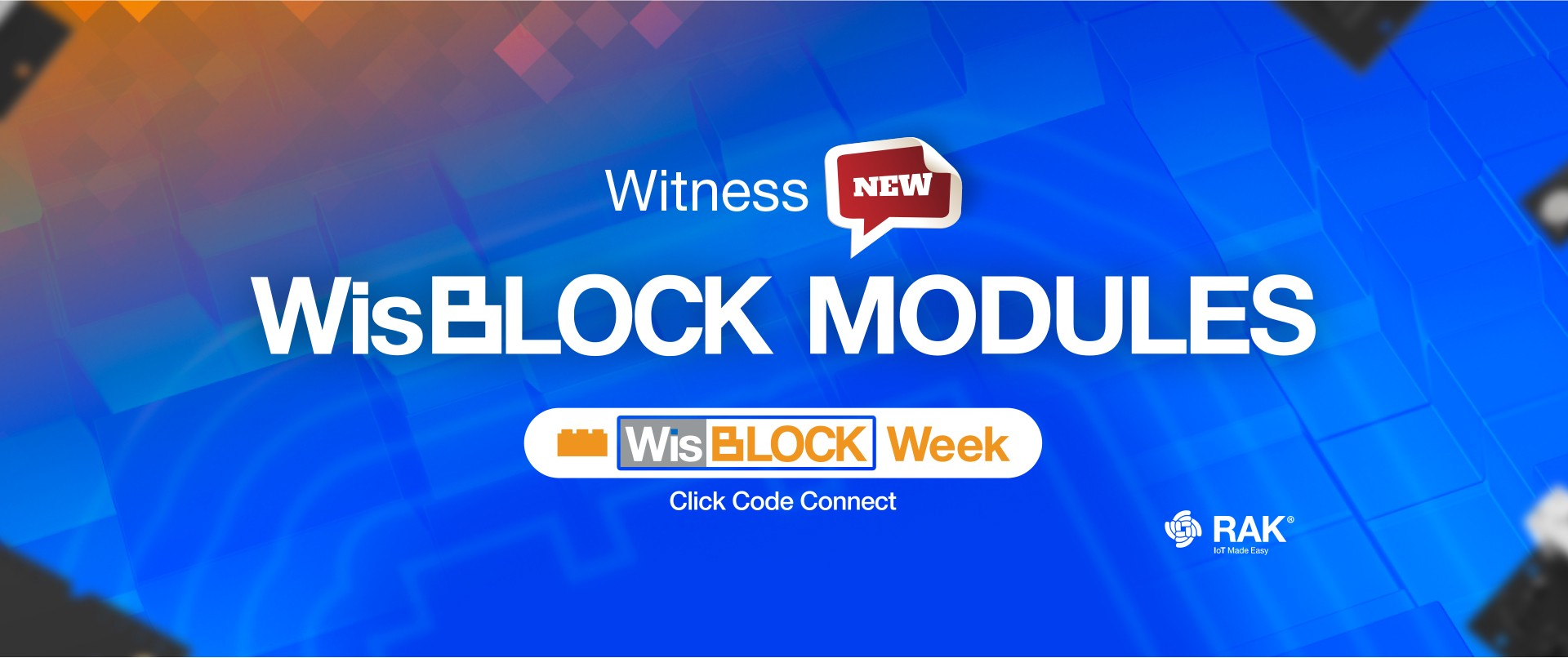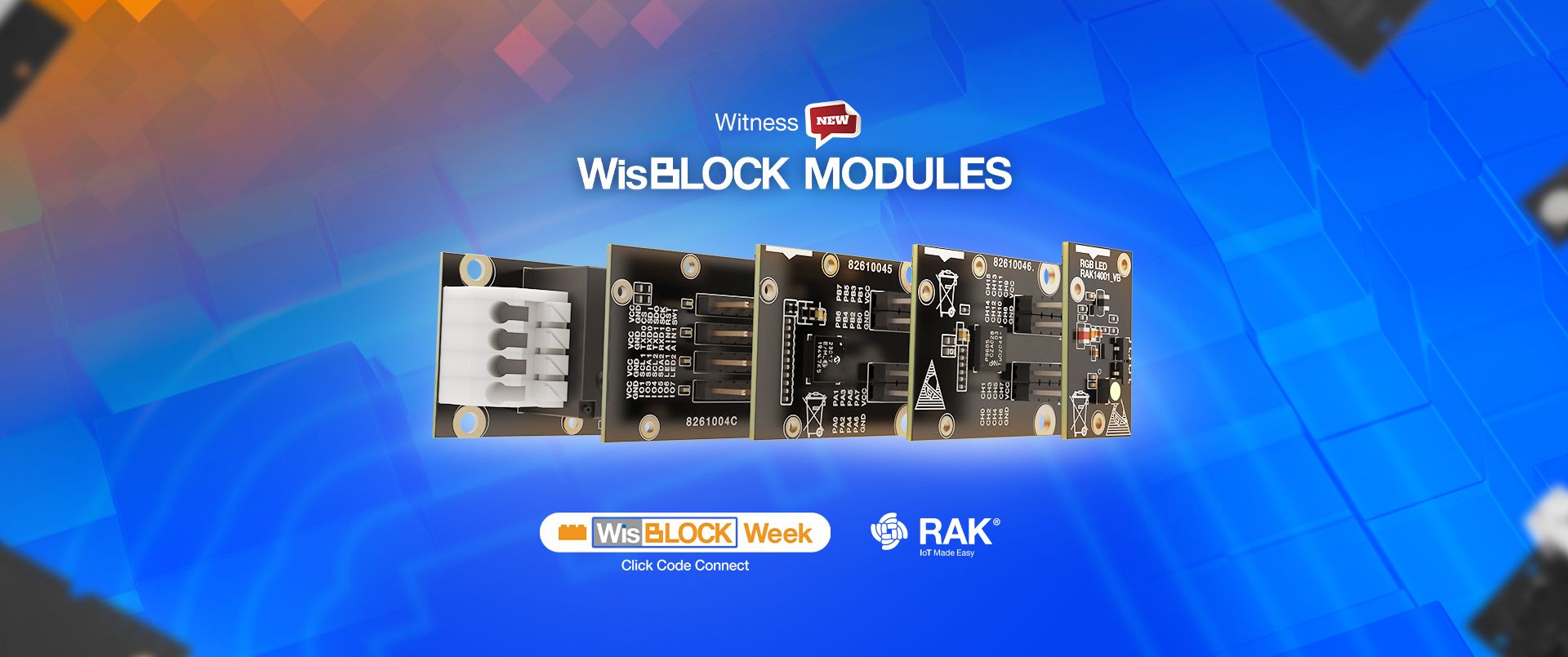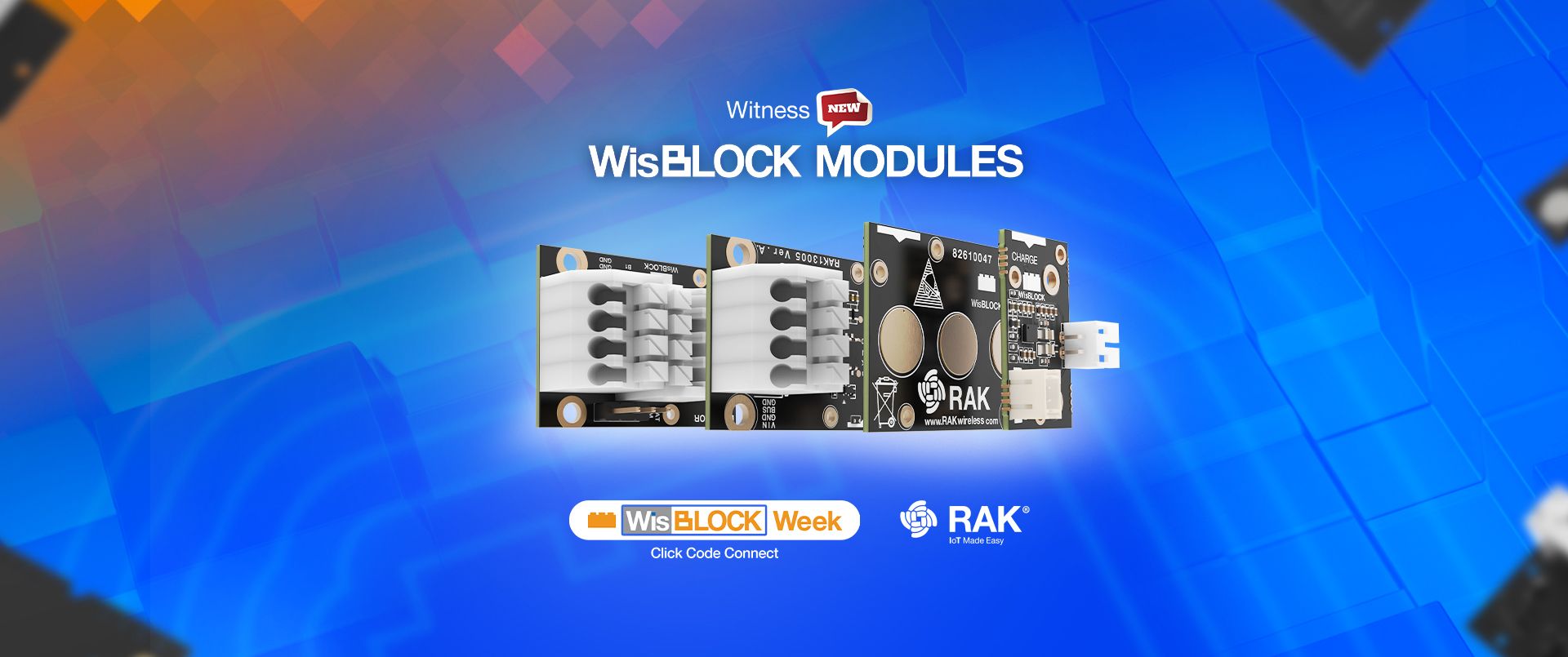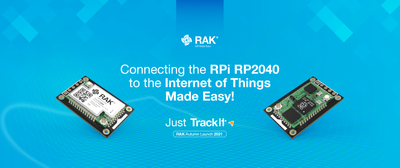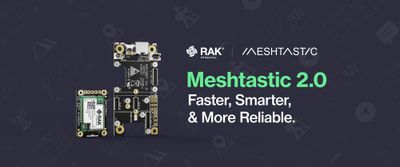Connecting the RPi RP2040 to the Internet of Things made easy
Ever since the IoT MCU RP2040 was announced by Raspberry, excitement was high. Finally, the first Pico breakout boards with the RP2040 MCU arrived and of course the first thing we did at RAK was to connect it to a LoRa® transceiver and add long range communication capabilities to the Pico.
Soon we realized that it would be a great idea to combine the RP2040 MCU and a LoRa transceiver into an easy-to-use module. And of course, we want it to be a part of our WisBlock product line.
That was the birth of the RAK11310 WisBlock Core module. On a Core module with the size of 20x30mm we squeezed the MCU, a LoRa transceiver and an 16 MB large Flash module together. We also added a boot select button and an u.FL connector for the LoRa antenna.
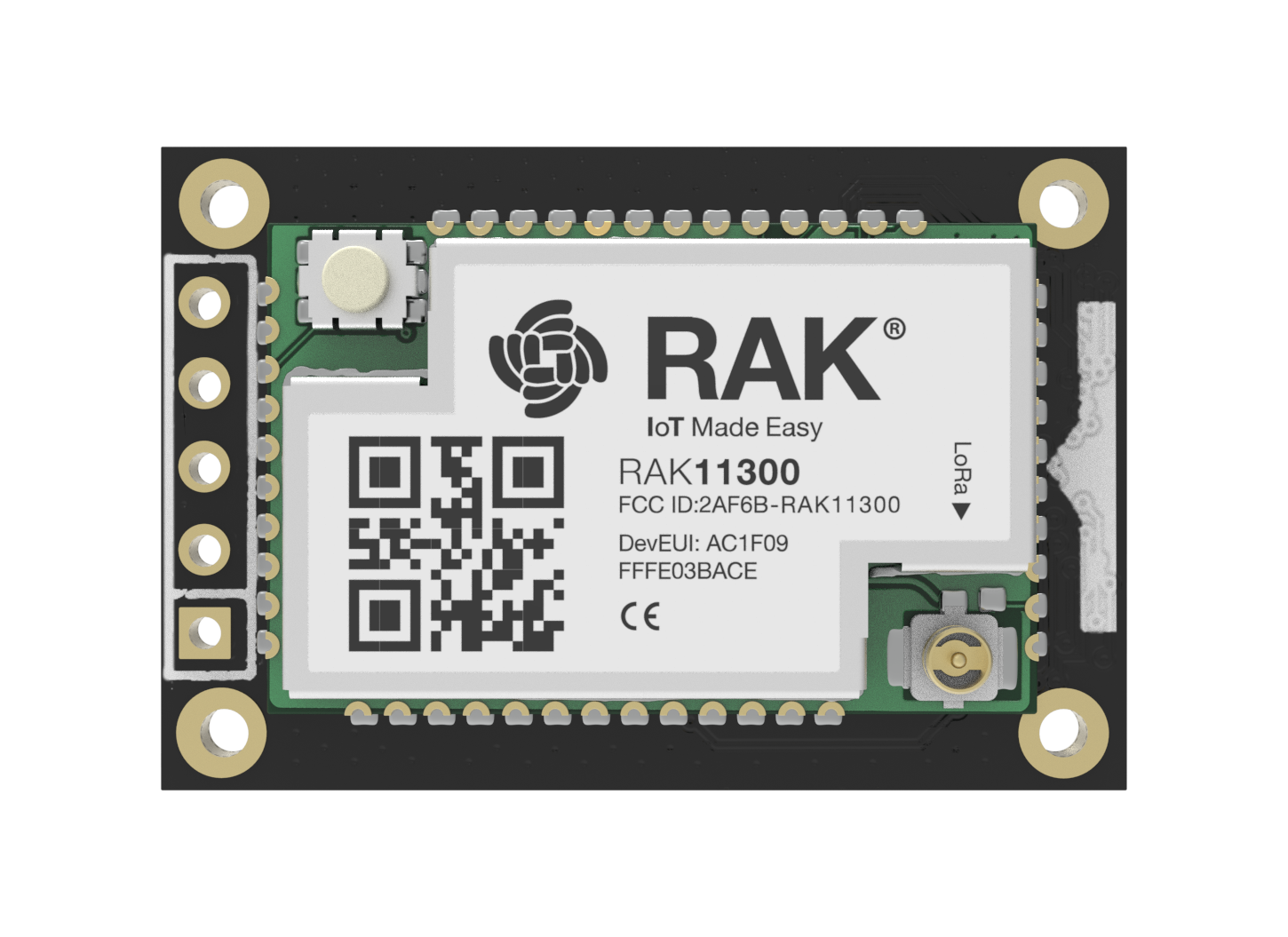
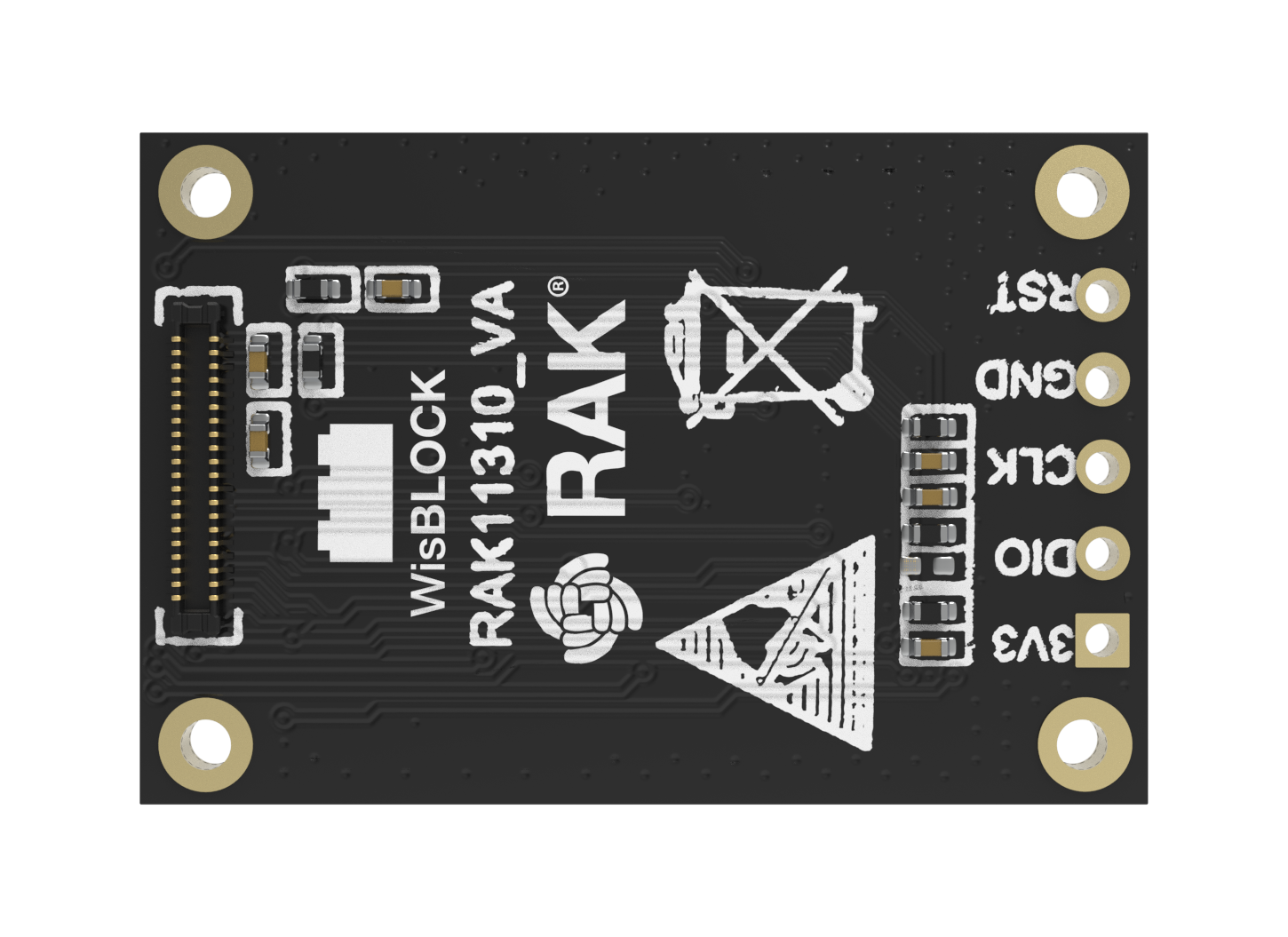
As with all WisBlock Core modules, it has 100% Arduino IDE support, this time using the Mbed OS BSP. Supporting this platform makes it easy for beginners to start with the RAK11310. The LoRaWAN library used to connect the module to the world of IoT is based on the same library we use for our other WisBlock Core modules.
For advanced users, the Mbed OS offers everything from running multiple threads, using signals to communicate between the threads and multitasking.
And of course, we prepared example code for all WisBlock modules that are compatible with RAK11310 in our Github WisBlock repository.
With our LoRaWAN library and connection examples, you can use the module in all LoRaWAN regions around the world. We support EU868, US915, CN470, EU433, CN779, IN865, AU915, KR920, AS923-1, AS923-2, AS923-3, AS923-4 and RU864.

Click Code Connect
But the main reason why we want the RAK11310 to be in the WisBlock family is that we can give you the same easy to use, easy to extend, easy to test experience with the growing number of WisBlock modules.
Use cases
The RAK11310 is the perfect Core module where LoRa communication is required. As a WisBlock Core module it can be extended with a wide variety of Sensor, Interface and other modules. With detailed documentation, Arduino and MBed OS support, and a UF2 bootloader in ROM, the RAK11310 has the lowest possible barrier to entry for beginner and hobbyist users.
The RAK11310 is a remarkably good platform for AI using TinyML. With TensorFlow Lite Micro library now ported to RP2040, it will enable enthusiasts to run machine learning models using the data that they gathered from a wide selection of WisBlock modules and sensors.
Taking advantage of RAK11310 AI capability, imagine how it will transform your home automation experience by providing suggestions based on your previous activities, for instance automatically adjusting the lights or air conditioner based on the specific time of the day, number of people in the room and season.
With its powerful chip, it will enable devices to pre-process data before sending the payload, reducing the network bottleneck and making more efficient use of server resources.
Technical information
| Module size: | ~20mm x ~30mm |
|---|---|
| Supply voltage: | 3.3V |
| MCU: | Raspberry RP2040 running with 133 MHz |
| LoRa transceiver: | Semtech SX1262 with continuous frequency |
| coverage from 150 MHz to 960 MHz | |
| Memory: | 264 kB of embedded SRAM, 16MB external Flash |
| Peripherals: | Dual UART, Dual SPI, Dual I2C, 16 PWM channels, USB controller and GPIO’s |
| Communications: | LoRa communication with worldwide coverage |
